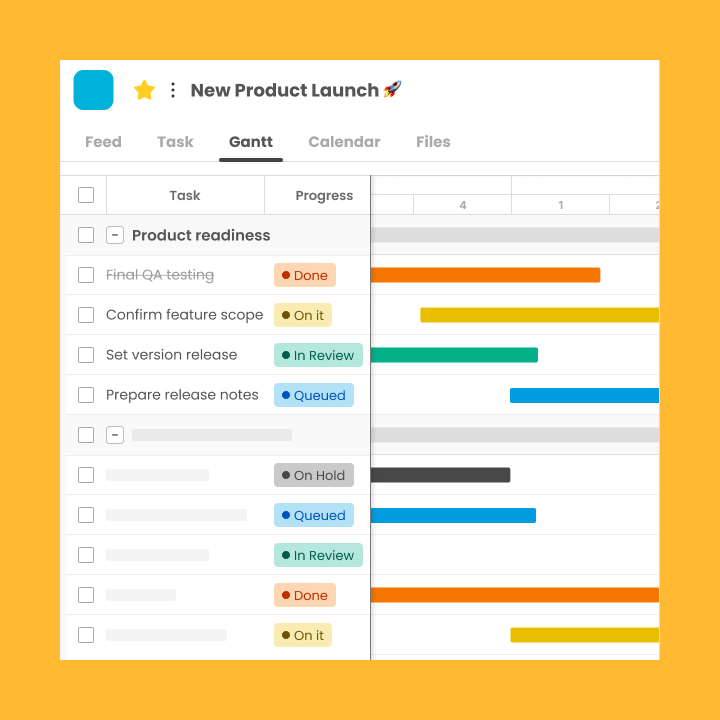Every project, whether it involves launching a website, developing a product, or organizing a company, requires consistent information throughout its lifecycle. Effectively organizing your documentation is one of the best ways to ensure smooth progress. Small businesses often struggle with project organization, especially when multiple team members, shifting deadlines, and varying client requests come into play. This highlights the importance of proper project documentation. A standardized method for filing project information can help keep everything on track and prevent issues from arising.
In this guide, we will explore common project documents, their role in each project phase, and provide free resources. Whether you are new to project management or looking to enhance your documentation practices, the insights and ready-to-use resources here can help you work more efficiently.
What Is Project Documentation?
Definition and Purpose
Project documentation systematically collects all information, plans, records, and updates generated during a project. It includes written and verbal details that explain the project, the people involved, the execution plan, and the expected outcomes. With these documents, the team has clear direction, ensuring everyone is aligned and has a reference for decision-making.
Effective documentation is often a key responsibility of the project manager, guiding the planning, execution, and review of each project stage. Insights from past projects can be invaluable for post-project evaluations, improving control over current work, and informing future project planning.
Why Project Documentation Matters
Poor documentation increases the likelihood of miscommunication, missed deadlines, and budget overruns. Comprehensive project documentation outlines team members’ roles, objectives, timelines, resources, potential challenges, and strategies for achieving goals. This ensures that all parties are working with the same information, reducing misunderstandings.
For small business owners juggling multiple responsibilities, ready-made project documents simplify management and enhance productivity. Reliable documentation for every project component helps prevent scope creep, confusion over deliverables, and unexpected budget changes. It also proves beneficial when new team members join or after project completion and review.
Key Project Documents by Project Phase
Initiation Phase Documents
During the initiation phase, the groundwork for the project is established. Documents created at this stage outline the project’s main objectives, justify its importance, and identify key stakeholders. The project charter is typically the first and most crucial document, detailing the project’s goals, scope, timeline, and stakeholders while granting authorization to proceed. A business case may also be developed to explain the project’s benefits to the organization, and a stakeholder register identifies who is involved and their roles.
Initiation documents clarify the project’s goals and seek approval or funding. They lay the foundation for planning and execution by defining objectives and necessary participants.
Planning Phase Documents
Once the project receives approval, planning begins. This phase focuses on creating essential project management documents that outline how the project will be executed and monitored. The project plan includes the schedule, budget, quality standards, and risk management strategies.
The work breakdown structure (WBS) breaks the project into manageable tasks with clear deadlines. It also clarifies responsibilities using the RACI model (Responsible, Accountable, Consulted, Informed). A risk register helps identify and address potential issues, while a communication plan ensures regular updates for all stakeholders.
Together, these planning documents organize the project’s progression and guide team members on their actions.
Execution and Monitoring Documents
The execution phase involves implementing the project plan. Key documentation activities during this phase include tracking performance, sharing progress updates, and addressing any issues that arise. Monitoring the project budget is crucial to ensure spending aligns with the planned budget, keeping stakeholders informed of the project’s status and any changes.
An issue log records problems encountered during execution, along with their resolution status and responsible team members. When changes occur, a change request form is used to assess the impact on scope, timeline, and budget. These documents keep the team informed, accountable, and prepared to tackle unexpected challenges.
Closure Phase Documents
As the project concludes, it is essential to confirm that all deliverables have been completed and approved. A project closure document summarizes accomplishments, outstanding tasks, and approvals from stakeholders. It may also include any final work transfers or ongoing responsibilities.
Creating a lessons learned document is also important at this stage. This document captures successes, challenges, and insights for future projects. Once the documentation is finalized, the project officially concludes, providing valuable knowledge for future endeavors.
Essential Project Management Documents & Templates
Project Plan Template
The project plan serves as the master document guiding all execution phases. It includes stakeholder engagement plans, deadlines, task dependencies, resource allocation, and quality measures. A project plan template saves time by providing pre-formatted sections that can be easily adapted for new projects.
Project Charter
The project charter offers a concise overview of the project’s authority, scope, and objectives. It summarizes the project’s goals, involved parties, and any key assumptions or limitations. Using a project charter template ensures that all critical components are included from the start.
Work Breakdown Structure (WBS)
The WBS helps project teams organize work into manageable components. It breaks down project outputs into tasks that can be tracked, completed, and assigned. A WBS template provides a visual framework for task hierarchy, facilitating responsibility assignment and deadline establishment.
RACI Matrix
A RACI matrix clarifies roles by assigning tasks to team members and specifying whether they are Responsible, Accountable, Consulted, or Informed. This reduces uncertainty, especially in cross-functional teams. Templates allow for quick and consistent creation of matrices for any project.
Risk Register
A risk register captures potential risks, their likelihood, severity, mitigation strategies, and assigned owners. Tracking these elements enables proactive responses to issues before they escalate. Templates provide a consistent framework for risk identification and response planning.
Communication Plan
The communication plan outlines how project information will be shared with stakeholders. It specifies what will be communicated, to whom, how often, and through which channels. Templates ensure that no critical communication tasks are overlooked.
Project Budget
The project budget encompasses costs related to labor, materials, overhead, and contingencies. Budget templates assist project managers in estimating, allocating, and tracking expenses throughout the project lifecycle. These tools are essential for staying within financial limits.
Issue Log
The issue log documents any problems, their resolution processes, and responsible parties. This promotes team accountability and helps maintain schedules by addressing project-related issues promptly.
Change Request Form
The change request form records the nature of a request, its justification, and the anticipated impact when a stakeholder proposes a change. Templates standardize this process, ensuring consistent evaluation and approval criteria.
Project Closure Document
This document formally concludes a project. It details completed work, deliverables handed over, approvals from key stakeholders, and post-project evaluation strategies. Closure templates help ensure that no essential processes are overlooked in the final phase.
Lessons Learned Template
Lessons learned documents capture insights, experiences, and recommendations from team members. A template provides a standardized format for recording both successes and challenges, guiding future projects to avoid repeating mistakes.
How to Create and Maintain Project Documents
A well-organized digital folder structure helps teams quickly find and manage documents. By using consistent naming conventions and categorizing files by project stage or document type, you ensure that all materials remain accessible and easy to understand throughout the project.
Use Standardized Templates
Pre-designed templates ensure that all essential sections are included and save time on formatting. They also promote consistency across teams and projects, making it easier for stakeholders to read and evaluate documents. You can find free project management templates available for download on various websites.
Real-Time Collaboration and Version Control
As projects evolve, it’s crucial to track document changes and ensure everyone is using the latest version. Tools like Google Drive, SharePoint, and specialized project management software enable real-time collaboration and version control. This helps prevent duplicated efforts and misunderstandings.
Best Practices for Project Documentation
Regular updates ensure that documents accurately reflect the current state of the project. Outdated paperwork can lead to confusion, especially when tasks change or new risks arise. Assigning a document owner for each file helps maintain accuracy.
Documents that are overly complex or difficult to access lose their value. Use a logical structure, clear language, and readable formatting to ensure all team members understand and effectively use the documentation.
Documentation should align with your project’s overall approach. For example, Waterfall projects may require detailed Gantt charts and structured planning documents, while Agile projects might need daily standup notes and sprint reports. Tailoring your project materials to the appropriate methodology enhances execution and monitoring.
Experience Smarter Project Organization with Morningmate
Great project documentation is only valuable when it’s easy to maintain and collaborate on. With Morningmate, your team can centralize every file, comment, and update in one workspace—eliminating version confusion and endless email threads. Whether you’re documenting project charters, risk registers, or lessons learned, Morningmate keeps everything structured and accessible to the right people in real time. Try Morningmate free and experience how effortless organized teamwork can be.



